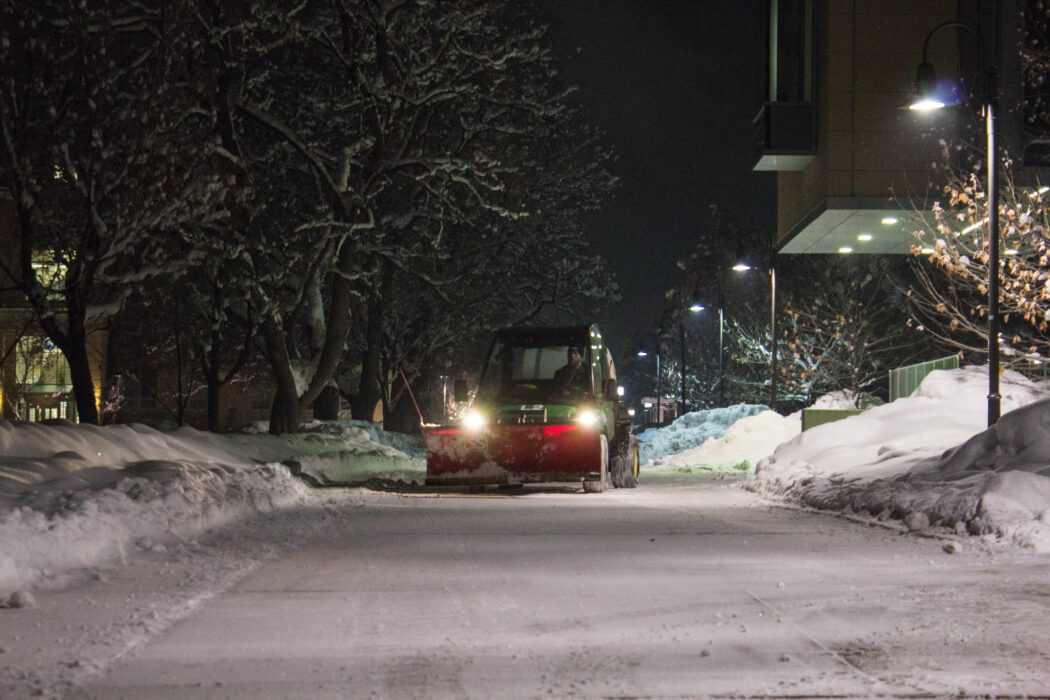Prepare for this year’s snow fall
Winter is coming, and for Cache Valley, which means snow, but how much? A Utah State University climatologist explained the predicted forecast for Cache Valley this winter and how community members can prepare.
Jon Meyer, the assistant state climatologist at the Utah Climate Center said the expectation for this winter in Northern Utah is normal to slightly above normal winter precipitation. He said he is optimistic Utah will have a string of years tofollow this pattern.
What does normal to slightly above normal mean? Meyer said climatologists tend to lean away from dialing in numbers and specific amounts. He said because seasons are dominated by events, this plagues the accuracy of seasonal predictions.
“You could have 85 out of 90 days that look very dry, but five days out of a 90 day period where we get huge snowfall could really turn around a season,” Meyer said.
Meyer said climatologists base predictions on what’s called a climate teleconnection. According to climate.gov, teleconnections typically entail climate patterns spanning thousands of miles. Meyer said many forecasters in the Western United States look at the El Niño and La Niña teleconnection cycles.
Meyer said when the central Pacific Ocean gets warmer than normal, it’s considered an El Niño phase, and when it gets colder than normal, it’s a La Niña phase.
“During El Niño events like we’re expecting this wintertime, a tropical jet stream tends to throw wintertime storms through California and to our southern neighbors Arizona and New Mexico,” Meyer said. “During La Niña years, the jet stream tends to push those storms to the Pacific Northwest and we get drier conditions in California, Arizona and New Mexico.”
Meyer said people often make predictions whether Utah will be in an El Niño or La Niña year based on conditions in other states like California and Arizona. However, he said Utah can’t always be compared with other western states because climatologists don’t really see any statistical relationship with Utah in connection with the Pacific Ocean and its climate patterns.
“Sometimes we’re drier than normal. Sometimes we’re wetter than normal in an El Niño year,” Meyer said.
Instead, Meyer said climatologists in Utah look at the Quasi Decadal Oscillation, or QDO, which usually controls northern Utah’s snowpack. Meyer says as of last year, Utah transitioned back into the wet phase after being in the dry phase for about five years.
“It doesn’t say we couldn’t get another winter like we did last year. The roll of that dice is pretty unfavorable to come up again like we had last year, but even a normal to a slightly above normal winter is great,” Meyer said. “It’s what we need to continue to provide drought relief to continue to recharge the state’s reservoirs and water resources.”
With the winter months coming, Meyer said it’s important for community members to be prepared for the snow.
“One of the biggest things that I could recommend people to do is to make sure their houses, their yards and their vehicles are ready for the winter season,” Meyer said.
He said he likes to use the Utah Department of Transportation traffic app to check for snowy road conditions.
According to Logan City’s snow removal website, the city’s street maintenance division has 16 crew members, a foreman and a manager who are responsible for snow removal.
“The goal of the Street Maintenance Division is to quickly and efficiently provide safe and clear roadways as soon as possible after a snowstorm,” the website reads.
The website recommends community members to be aware of snow plows and to allow at least 50 feet between their car and a snowplow. The website also reminds citizens it is against Logan City Ordinance 10.52.170 to park a vehicle on any street or city owned parking lot between the hours of midnight and 6 a.m. from Nov. 15 through March. 15.
“The bottom line is that we do the best job we can to provide clear and safe driving conditions for citizens,” Logan City’s website reads. “Every storm is different, but our goal for each one is to provide timely and effective service. With your cooperation, we can make this winter’s snow removal a success.”

